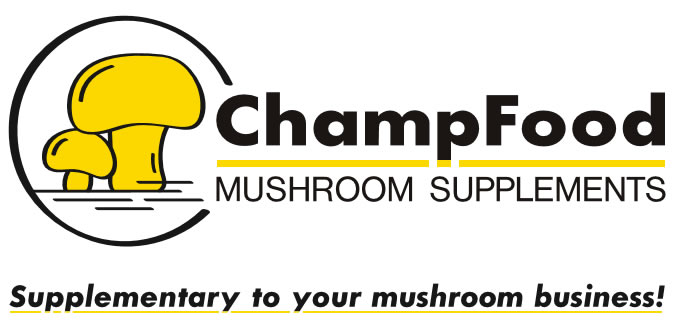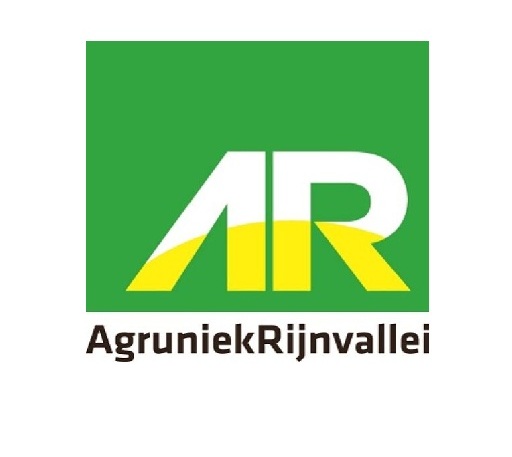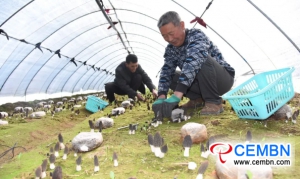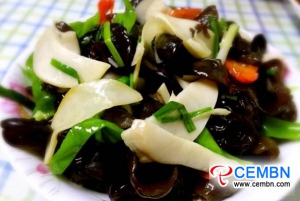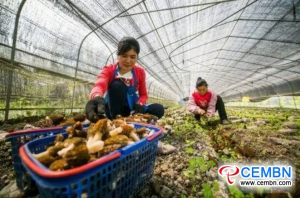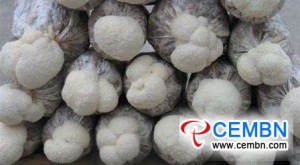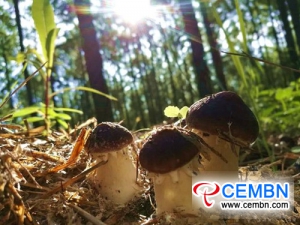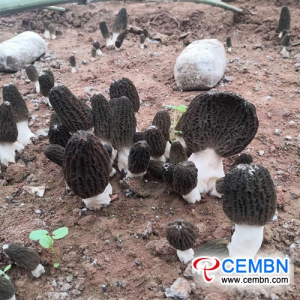
Mushroom Matter
Welcome on our platform. Why MUSHROOM MATTER? Because mushrooms play an important role in our lives as well in business. Our goal is to bring the world the very latest mushroom news with the upmost care to support the positioning of our beloved Mushroom.
In recent days, farmers working in Hebei Longtai Mushroom Base owned by Hebei Longtai Agricultural Technology Co., LTD are engaged with picking, packing and marketing of Morel mushroom.
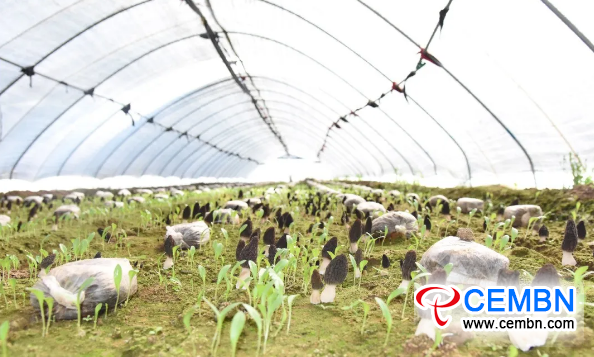
“At present, fresh Morel mushrooms could be sold at 130-160 CNY per kg. And, price of dried Morel mushroom could hit 2000 CNY per kg. In each shed, picking volume reaches 200 kg while profits come to at least 5000 CNY,” introduces Mr. Zhao Wanhui, general manager of Longtai Company, adding that the purpose of growing this kind of rare mushroom is to let the land produce more benefits. As a kind of high-end fungus food, Morel mushroom holds high economic benefits, bright market prospect, and it is worthy to be developed.
In this village, annual output value on Morel mushroom cultivation hits over 4 million CNY
Recently, in Pingxing Village, Dafang County, Guizhou Province of China, Morel mushrooms artificially cultivated in greenhouse are evolving into the maturation, growers are engaged with picking work.
“Over the years, considering local characteristics of high altitude, low temperature and fertile soil, government of Dafang County has been positively expanding the development of Morel mushroom industry. By now, 325 mushroom greenhouses have been built, annual output value could come up to over 4 million CNY. Besides, by farming Morel mushrooms, at least 300 households have been leaded to generate incomes and grow rich,” introduces one of local villagers warmly, going on that Morel mushrooms artificially cultivated in Pingxing Village are well received by consumers in Guangdong, Shanghai, Zhejiang, Sichuan and other provinces and cities in China.
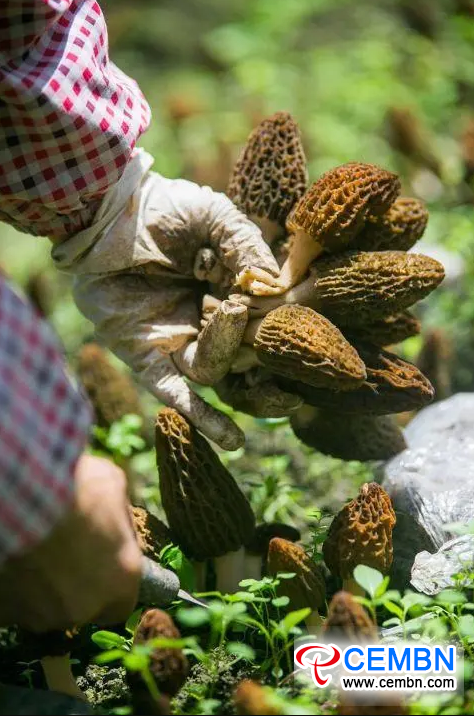
Hericium mushrooms are not only delicious, but also show the efficacy of curing stomach illness. And, they are a kind of rare edible and medicinal mushroom that gains popularity by consumers in China. In order to realize successful cultivation of Hericium mushroom, it is necessary to know about its biological characteristics which refer to the external environment required during the fruiting period of Hericium mushroom.
1. Temperature: The ideal temperature during the fruiting period of Hericium mushroom is 12-20 degrees Celsius. When the temperature is higher than 25 degrees Celsius, malformed mushrooms will occur.
2. Light intensity: 300 to 600 lux of scattered light is required during the fruiting period of Hericium mushroom. Too-strong light could inhibit the growth of sporocarps while too-weak light easily results in malformed mushrooms.
3. Humidity: During the fruiting period of Hericium mushroom, it is proper to control the humidity at 75%-90%. A mist of water should be sprayed and be sure not to spray it directly on tiny buds, or it will cause water stain which brings to a halt to growth of mushroom. When you find that the sporocarps of Hericium mushroom appear yellow and withering, it refers to too-high humidity. In addition, it is noteworthy that normal mushroom bodies present white and fresh, and should be properly recognized.
4. Air: Hericium mushroom is a kind of aerobic fungus and it is sensitive to carbon dioxide. During the growth period, coralloid malformed mushrooms are easy to occur under poor ventilation, anoxic and high humidity. What’s more, be sure to harvest mushrooms in due course, premature harvest could affect the yield while too-late picking also exerts impacts on mushrooms’ flavor and quality.
Instances of chronic illness such as diabetes, heart disease and arthritis are on the rise. Healthy diet and lifestyle choices have continuously been shown as a means of preventing chronic illness. Mushrooms Canada commissioned a Registered Dietician to prepare a set of health sheets that discuss the role fresh mushrooms play in contributing to a healthy lifestyle for all.
Information, statistics and suggestions that may concern you, please take a look in the list below. And remember, fresh mushrooms are not only good tasting but also good for you!
Arthritis
Blood Pressure
Breast and Prostate Cancer
Childhood Obesity
Diabetes
Diverticulosis
Gout
Healthy Aging
Heart Health
Immunity
Weight Management
Source: Mushrooms.ca
Disclaimer: The provided information is not meant to replace the medical counsel of your Doctor. If you have further questions please consult with your Doctor or Registered Dietitian.
On May 11, walking into the mushroom base located in Longju Town, Dongying City, Shandong Province of China, what firstly catch your eyes are superior Stropharia rugosoannulata.
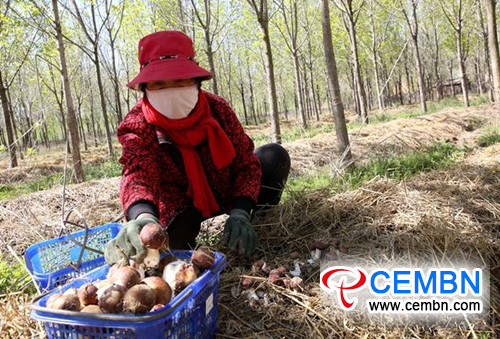
“Stropharia rugosoannulata cultivation implemented under White Wax forest save land resources while enhancing the fertility of forest land, thus showing a double advantage,” introduces Mr. Wang, general manager of Shandong Minnong Agricultural Development Co., LTD, going on that the base daily harvests 1000kg of fresh Stropharia rugosoannulata, output value on each picking season could reach over 500,000 CNY. And, each mu of land could bring about 10,000 CNY of incomes for mushroom farmers.
On May 7, in Lijia Mushroom Stick Professional Cooperative located in Badu Town, Longquan City, Zhejiang Province of China, the first full-automatic inoculation machine of Shiitake mushroom’s Solid Spawn has gotten its success in trial production, rate of inoculation goes faster than 500 sticks. For the first batch of Shiitake mushroom sticks (2000 sticks), percentage of success reaches 98%.
“This full-automatic inoculation machine realizes automatic hole-punching, spawn-input and bagging, inoculation speed attains at least 500 sticks per hour, percentage of success reaches 98% while staff employment could be reduced by half,” introduces person in charge of the project warmly, adding that the machine comprehensively lifts the inoculation efficiency of mushroom sticks. Most importantly, it holds crucial realistic significance to the acceleration of transformation & development, and competitiveness improvement of mushroom industry in Longquan City.
Morel mushrooms cultivated under walnut tree BOOM
On April 22, Morel mushrooms cultivated under walnut tree are showing desirable growth trend in mushroom base of Qianyao Village, Luoyang City, Henan Province of China, growers are engaged with mushroom picking.
“Our village incorporates 122 poor households totalling 505 poor population. In order to help them get rid of the hat of poverty, we decided to plant Morel mushrooms in walnut forest that covers 2076 mu of area,” introduces head of Qianyao Village warmly, adding that this kind of interplant pattern not only simplifies the process of sunshade, but also saves cost. Besides, residues of Morel mushroom also provide nutrition for the growth of walnut tree, thus enhancing the output of walnut and improving the utilization rate of land.
“The first batch of Morel mushroom were sold out after they appear on market. Now, the second batch are about to be picked, by now, we have received orders of at least 50 kg. Looking into the future, i am confident in turning this characteristic industry into the GOLDEN ROAD that leads villagers to end poverty and grow prosperous,” said head of Qianyao Village excitedly.


